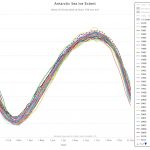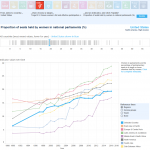
The BBC has a great article on a Siberian crater, the Batagaika crater, that is growing quickly due to melting permafrost. Excerpt from the article:
As more permafrost thaws, more and more carbon is exposed to microbes. The microbes consume the carbon, producing methane and carbon dioxide as waste products. These greenhouse gases are then released into the atmosphere, accelerating warming further.
“This is what we call positive feedback,” says Günther. “Warming accelerates warming, and these features may develop in other places. It’s not only a threat to infrastructure. Nobody can stop this development. There’s no engineering solution to stop these craters developing.”
The article provides some great context in understanding the impacts of global warming.






 Is the U.S. more violent “these days”? Kevin Drum tracks down crime data in his post
Is the U.S. more violent “these days”? Kevin Drum tracks down crime data in his post  This is an interesting Feb 7, 2017
This is an interesting Feb 7, 2017